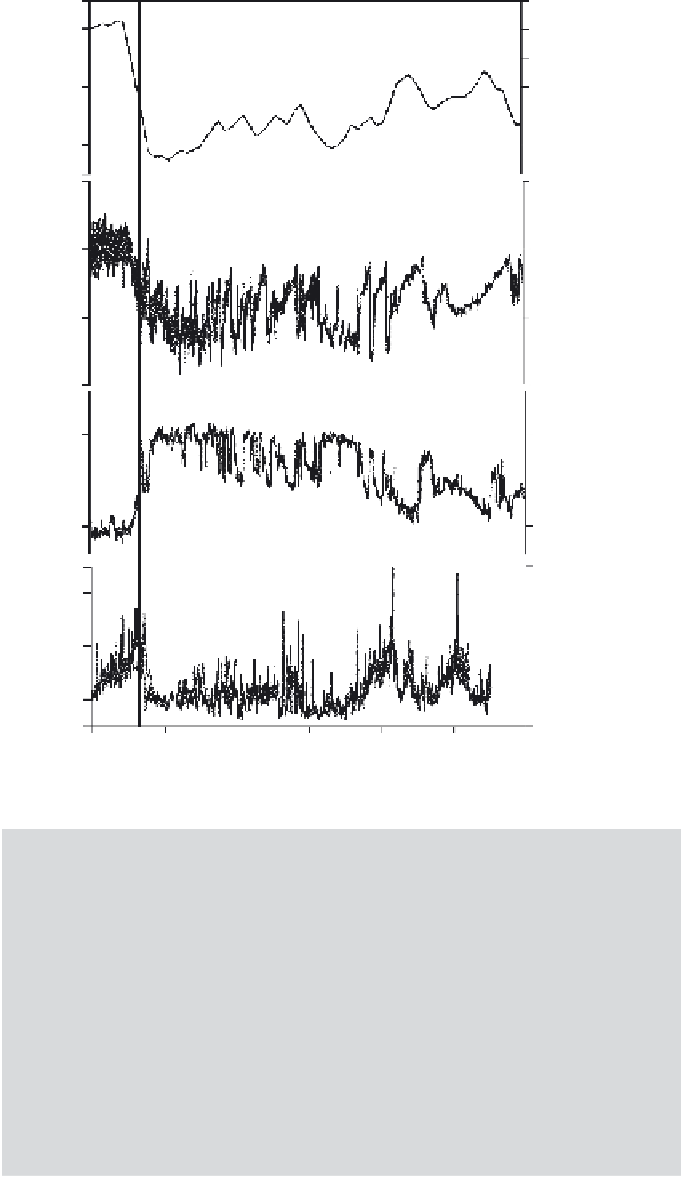Geoscience Reference
In-Depth Information
Figure 6.1 Greenland
ice-core records of
environmental change over
the last 120 000 years,
including the rapid, high
magnitude changes from
11 500 to 110 000 years ago
(i.e. Dansgaard-Oeschger
Events). The top two
records reflect global mean
temperature change
and
18
O, a proxy for
temperature change,
from Greenland ice cores.
The third time series
depicts changes in the
concentrations of sea salt
species measured in
the GISP2 ice-core
glaciochemical record, as
a proxy for intensity of
atmospheric circulation.
Bottom time series shows
the NH
4
time series in the
GISP2 ice core reflecting
overall greater terrestrial
biomass activity during
periods of warmer climate.
H designates the Holocene
periods, comparatively quiet
at this scale. (Modified from
Mayewski and White
2002
)
0
TEMPERATURE (
°
C)
Temp.
Change
(deg C)
-4
-8
TEMPERATURE
-25
del O18
(0/00)
-55
H
ATMOSPHERIC CIRCULATION
100
Seasalt
(ppb)
10
BIOGENIC EMISSIONS
25
700
GISP2 NH4
(ppb)
0
300
0
40,000
80,000
120,000
Years Before Present
change. This will be accomplished initially by presenting several key records
that homogenize and incorporate climatic conditions from throughout the NH.
The best records that accomplish this are the ice-core records from Greenland.
This will be followed by a presentation on Holocene climatic conditions from
several other records, all of which are highly resolved. After presenting the
''big picture'' on overall Holocene conditions, a discussion will follow that
looks at specific time periods during the Holocene. These individual periods
are often noted in discussions about Holocene climate because they are known
to be controversial or have some uncertainty in identifying the controls and
spatial variability in climate. For instance, it has recently been observed in
many paleoclimatic records that a distinct climatic event occurred about
8200-8400 years ago. This essay will summarize the thoughts on this event

Search WWH ::

Custom Search